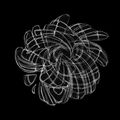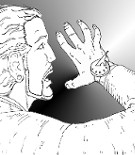Template:Selected anniversaries/September 21: Difference between revisions
No edit summary |
No edit summary |
||
| (21 intermediate revisions by the same user not shown) | |||
| Line 2: | Line 2: | ||
File:Gerolamo Cardano.jpg|link=Gerolamo Cardano (nonfiction)|1576: [[Gerolamo Cardano (nonfiction)|Gerolamo Cardano]] dies. He was one of the most influential mathematicians of the Renaissance. | File:Gerolamo Cardano.jpg|link=Gerolamo Cardano (nonfiction)|1576: [[Gerolamo Cardano (nonfiction)|Gerolamo Cardano]] dies. He was one of the most influential mathematicians of the Renaissance. | ||
File: | File:Joseph-Louis Lagrange.jpg|link=Joseph-Louis Lagrange (nonfiction)|1781: [[Joseph-Louis Lagrange (nonfiction)|Joseph-Louis Lagrange]] writes to d'Alembert: "It appears to me also that the mine [of mathematics] is already very deep and that unless one discovers new veins it will be necessary sooner or later to abandon it." This view is prevalent at the end of the eighteenth century. | ||
File:Supplice de 9 émigrés Octobre 1793.jpg|link=French Revolution (nonfiction)|1792: [[French Revolution (nonfiction)|French Revolution]]: The National Convention declares France a republic and abolishes the absolute monarchy. | |||
|| | ||1801: Moritz Hermann von Jacobi born ... engineer and physicist born in Potsdam. Jacobi worked mainly in Russia. He furthered progress in galvanoplastics, electric motors, and wire telegraphy. Pic. | ||
File: | ||1817: John Allan Broun born ... scientist with interests in magnetism, particularly of the earth, and meteorology. Broun studied in Edinburgh University and worked at the observatory in Makerstoun from 1842 to 1849 before moving to India to work in the Kingdom of Travancore. He continued his studies on geo-magnetism in India and was involved in setting up observatories there apart from managing the Napier Museum in Trivandrum. One of the fundamental discoveries he made was that the Earth loses or gains magnetic intensity not locally, but as a whole. He also found that solar activity causes magnetic disturbances. Pic: https://maddy06.blogspot.com/2016/04/reaching-out-for-stars.html | ||
File:Heike Kamerlingh Onnes.jpg|link=Heike Kamerlingh Onnes (nonfiction)|1853: Physicist and academic [[Heike Kamerlingh Onnes (nonfiction)|Heike Kamerlingh Onnes]] born. He will receive widespread recognition for his work, including the 1913 Nobel Prize in Physics for "his investigations on the properties of matter at low temperatures which led, ''inter alia'', to the production of liquid helium". | |||
||1860: Second Opium War: An Anglo-French force defeats Chinese troops at the Battle of Palikao. | |||
||1866: Charles Nicolle born ... microbiologist and academic, Nobel Prize laureate typhus. Pic (cool tech). | |||
||1874: Jean-Baptiste Élie de Beaumont dies ... geologist and engineer. His theory of the origin of mountain ranges did not find general acceptance, but proved of great value to geological science, owing to the extensive additions to the knowledge of the structure of mountain ranges which its author made in endeavoring to find facts to support it. Pic. | |||
||1884: Dénes Kőnig born ... mathematician and theorist. Pic. | |||
|| | ||1893: K. Ananda Rau born ... mathematician. He will work on the summability of series, the theory of functions of a complex variable, and sums of an even number of squares. Pic. | ||
||1895: Joseph L. Walsh born ... mathematician who worked mainly in the field of analysis. The Walsh function and the Walsh–Hadamard code are named after him. The Grace–Walsh–Szegő coincidence theorem is important in the study of the location of the zeros of multivariate polynomials. Pic. | |||
||1895: Juan de la Cierva y Codorníu, 1st Count of la Cierva born ... civil engineer, pilot and aeronautical engineer. His most famous accomplishment was the invention in 1920 of the Autogyro. Pic. | |||
|| | ||1899: Juliusz Paweł Schauder born ... mathematician, known for his work in functional analysis, partial differential equations and mathematical physics. Pic. | ||
|| | ||1903: Preston Tucker born ... engineer and businessman, designed the Tucker Sedan. Pic. | ||
|| | ||1905: Nikolay Nikolayevich Benardos dies ... inventor of Greek origin who in 1881 introduced carbon arc welding, which was the first practical arc welding method. Pic. | ||
|| | ||1906: Samuel Arnold dies ... conspirator, Lincoln kidnap plot. Pic. | ||
|| | ||1917: Phyllis Nicolson born ... mathematician and academic ... most known for her work on the Crank–Nicolson scheme together with John Crank. Pic. | ||
|| | ||1918: John Gofman born ... physicist, chemist, biologist, and academic. Gofman pioneered the field of clinical lipidology. With Frank T. Lindgren and other research associates, Gofman discovered and described three major classes of plasma lipoproteins, fat molecules that carry cholesterol in the blood. Pic. | ||
|| | ||1926: Léon Charles Thévenin dies ... telegraph engineer ... He extended Ohm's law to the analysis of complex electrical circuits. Pic. | ||
|| | ||1926: Donald A. Glaser born ... physicist and neurobiologist, Nobel Prize laureate. Bubble chamber. Pic. | ||
|| | ||1927: Yuri Andreevich Yappa born ... theoretical physicist. He is known for publications on particle physics, quantum field theory, General Relativity, philosophy of science, and for his graduate texts on classical electrodynamics and theory of spinors. Pic. | ||
|| | ||1934: David James Thouless born - condensed-matter physicist.[8] He was awarded the 1990 Wolf Prize and a laureate of the 2016 Nobel Prize for physics along with F. Duncan M. Haldane and J. Michael Kosterlitz for theoretical discoveries of topological phase transitions and topological phases of matter.[9] | ||
|| | ||1942: The Boeing B-29 Superfortress makes its maiden flight. | ||
|| | ||1950: Edward Arthur Milne dies ... astrophysicist and mathematician. Pic. | ||
|| | ||1954: Mikimoto Kōkichi dies ... entrepreneur who is credited with creating the first cultured pearl and subsequently starting the cultured pearl industry with the establishment of his luxury pearl company Mikimoto. Pic. | ||
|| | ||1964: The North American XB-70 Valkyrie, the world's first Mach 3 bomber, makes its maiden flight from Palmdale, California. | ||
|| | ||1976: Orlando Letelier is assassinated in Washington, D.C. He is a member of the Chilean socialist government of Salvador Allende, overthrown in 1973 by Augusto Pinochet. | ||
|| | ||1996: Erika Cremer dies ... physical chemist and Professor Emeritus at the University of Innsbruck who is regarded as one of the most important pioneer in gas chromatography. Pic. | ||
|| | ||2002: Robert L. Forward dies ... physicist and engineer. Pic. | ||
|| | ||2003: The Galileo Probe is terminated by sending it into Jupiter. | ||
|| | ||2010: Jerrold Eldon Marsden dies ... mathematician. H was one of the world leading authorities in mathematical and theoretical classical mechanics. Marsden laid much of the foundation for symplectic topology. Pic. | ||
|| | ||2014: Michael Harari dies ... Israeli intelligence officer. | ||
|| | File:Spiral.jpg|link=Spiral (image) (nonfiction)|2018: Signed first edition of ''[[Spiral (image) (nonfiction)|Spiral]]'' used in [[high-energy literature]] experiments unexpectedly develops spontaneous [[Artificial intelligence (nonfiction)|artificial intelligence]]. | ||
|| | ||2017: Maurice Paul Nivat dies ... computer scientist. His research spanned the areas of formal languages, programming language semantics, and discrete geometry. Pic. | ||
</gallery> | </gallery> | ||
Latest revision as of 08:52, 6 March 2025
1576: Gerolamo Cardano dies. He was one of the most influential mathematicians of the Renaissance.
1781: Joseph-Louis Lagrange writes to d'Alembert: "It appears to me also that the mine [of mathematics] is already very deep and that unless one discovers new veins it will be necessary sooner or later to abandon it." This view is prevalent at the end of the eighteenth century.
1792: French Revolution: The National Convention declares France a republic and abolishes the absolute monarchy.
1853: Physicist and academic Heike Kamerlingh Onnes born. He will receive widespread recognition for his work, including the 1913 Nobel Prize in Physics for "his investigations on the properties of matter at low temperatures which led, inter alia, to the production of liquid helium".
2018: Signed first edition of Spiral used in high-energy literature experiments unexpectedly develops spontaneous artificial intelligence.

![1781: Joseph-Louis Lagrange writes to d'Alembert: "It appears to me also that the mine [of mathematics] is already very deep and that unless one discovers new veins it will be necessary sooner or later to abandon it." This view is prevalent at the end of the eighteenth century.](/w/images/thumb/c/c8/Joseph-Louis_Lagrange.jpg/107px-Joseph-Louis_Lagrange.jpg)



